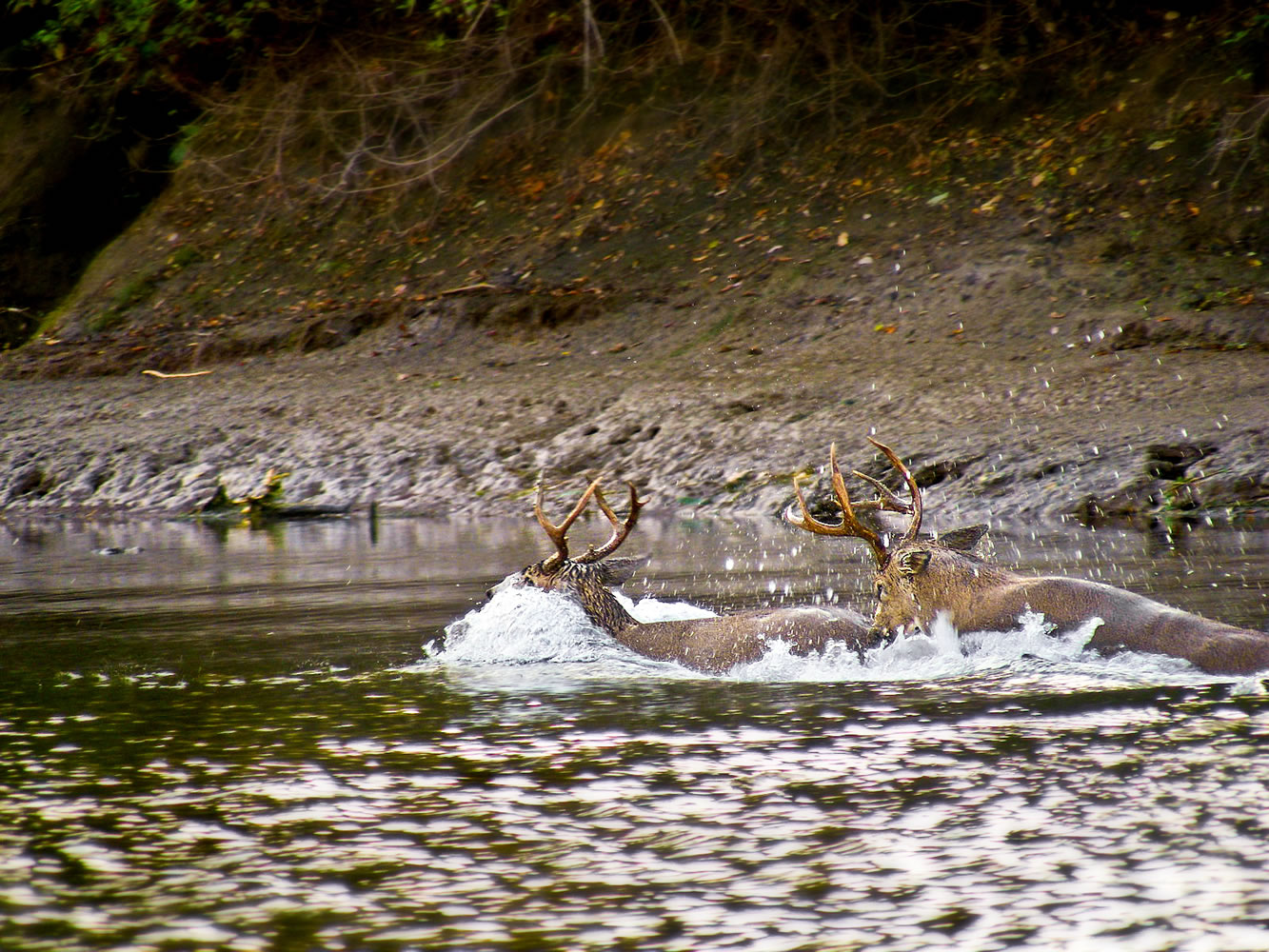Approximately 20,000 hunters will head afield beginning Saturday for the start of deer season in Southwest Washington and they will find widespread closures of private forest lands due to fire danger.
Ironically, the weather forecast is for a chance of rain on Friday and rain likely on Saturday.
Among the private timber holdings closed to all public access include Weyerhaeuser’s 422,000-acre St. Helens Tree Farm; 260,000 acres in eastern Skamania, Klickitat and southern Yakima counties; 321,000 acres of Longview Timber Corp. (formerly Longview Fibre) land, and the 85,000-acre Ryderwood Tree Farm in Cowlitz and Lewis counties.
Weyerhaeuser 1-866-636-6531
Ryderwood Tree Farm 1-360-623-1299
Longview Timber Corp. 1-360-442-7619
Closed lands in Skamania and Klickitat counties include those of Hancock Forest Management, Broughton Lumber Co., Western Pacific Timber LLC and Stevenson Land Co.
Hancock will allow walk-in hunting on its Wahkiakum County lands, according to David Boyd of the company’s lower Columbia region.
The access closures began in mid-August.
“We never dreamed this would drag on to effect our hunting seasons,” said Wayne Vinyard, area manager for Hancock Forest Management in Glenwood. “We hate to do this. We know people plan their whole year to go hunting.”
He said he has only seen it this dry a couple of other times in the past 40 years.
“Despite the shorter days and cooler temperatures, the fire danger is still as high as it was in August,” he said.
Vinyard and Patrick Allen of Sierra Pacific Industries, operator of Ryderwood Tree Farm, both said about an inch of rain needs to fall to wet the forests adequately.
“This has a very fundamental affect where people go deer hunting,” said Eric Holman, district wildlife biologist for the Washington Department of Fish and Wildlife. “Some of our best units are on industrial forest lands. Those are places where we have some of our better deer hunting and where a lot of effort takes place.”
Susan Van Leuven, manager of the 13,000-acre Klickitat Wildife Area, said she expects the private land closures will shift hunters to the state property.
The dry conditions will not help hunters, she added.
“Probably the best hunting method will be to select a good location and remain stationary,” Van Leuven said.
Deer do not appear as plentiful this fall as normal on the wildlife area, she said.
“We had a strong growing season, with rains well into early summer, so forage availability should not be an issue for deer,” she said. “I can’t speculate with any degree of certainty as to why the population seems to be down. It may be that the deer have simply remained in the higher elevations to avoid the hot weather.”
Holman said these conditions are not favorable for seeing deer.
“It’s very dry. It’s very windy. Deer don’t like wind,” he said. “It’s mild and they don’t have to get up and feed a whole bunch so they can just hide. I think that’s why we’re not seeing them.”
Holman does not anticipate a bonanza hunting season.
“This year should offer no better than average deer hunting opportunity as the previous spring was unusually cool and rainy with above average snowpack in the Cascades,” Holman said. “Unfortunately, that can be hard for them.”
Rifle hunters harvest, on average, about 3,500 to 3,700 bucks a season in the Clark, Cowlitz, Skamania, Klickitat, Lewis and Wahkiakum counties combined.
Some years the kill is a bit higher, some years a bit lower. Weather conditions often are more important than the deer population.
Much of the deer harvest comes late in the general season and in the four-day late hunt in mid-November.
“Deer populations are generally stable in lower-elevation units such as Washougal and Battle Ground, as well as the Klickitat game units,” he said.
Hunters typically do best in the low- and mid-elevation units where logging still occurs.
The game units in the Cascades don’t have the clearcuts and other open habitat they did three decades ago and blacktail populations, in particular, reflect that.
“Deer populations remain suppressed in the Cascade Mountain game units — Lewis River, Wind River and Siouxon,” Holman said.
Ultimately, blacktail deer hunting is about effort. It’s about pre-season scouting, hunting early, hunting long and hunting late.
“Its a function of the effort, focus and energy hunters put into the hunt,” Holman said. “Blacktail thrive in heavily vegetated habitats and are often very nocturnal. That means successful hunters must in position early in the morning and carefully hunt near sources of food and in secure cover.”
Hunters who don’t kill a blacktail during the general season, which ends Oct. 31, have plenty to look forward to with the four-day late hunt, this year Nov. 15-18.
One-third to 40 percent of the buck harvest comes in the those final four days.
More leaves are gone from the trees and bucks travel much more during the rut in search of does.
“This makes bucks more vulnerable as they spend less time hiding and are sometimes found in open habitats like clearcuts and meadows,” Holman said.




